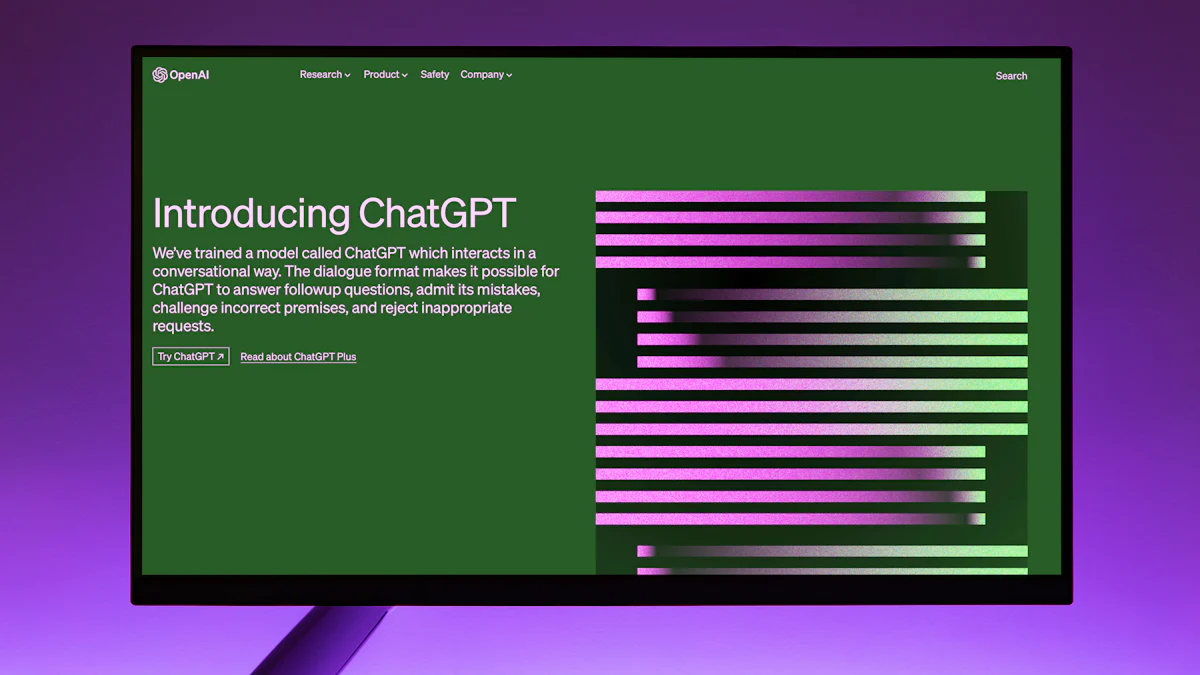Building a Custom Chatbot: Menu Chatbot Development Guide

Building a Custom Chatbot
In this blog, we will walk you through the process of creating a personalized chatbot tailored to your specific needs, with a special emphasis on menu chatbot development. Menu chatbots are designed to offer users a structured set of options for interaction, providing a seamless and intuitive experience.
By focusing on menu-based chatbot development, you can ensure that your chatbot offers an organized and user-friendly interface for engaging with your audience. Whether it's for customer support, e-commerce, or any other application, understanding how to build a custom menu chatbot can greatly enhance user experience and streamline interactions.
Menu Chatbot Development: By customizing the conversational flow through menu-based interactions, businesses can effectively cater to the unique needs of their users while ensuring a smooth and efficient communication process.
Throughout this guide, we'll delve into the intricacies of training and preparing your custom chatbot while also exploring the various applications and benefits that come with its implementation. Let's embark on this journey to unlock the potential of menu chatbot development for your business.
Understanding Custom Chatbots
Custom chatbots, also known as bespoke or tailor-made chatbots, offer a range of advantages for businesses looking to enhance user interactions and streamline their operations.
Benefits of Custom Chatbots
Personalized Interactions: Custom chatbots can greatly enhance user experience by providing personalized interactions tailored to the specific needs and preferences of individual users. This level of personalization can lead to higher user satisfaction and engagement.
Tailored to Business Needs: Unlike generic chatbot solutions, custom chatbots can be tailored to specific business needs, allowing for a more efficient and effective communication process. Whether it's automating customer support inquiries or facilitating e-commerce transactions, custom chatbots can be designed to align with the unique requirements of a business.
Types of Custom Chatbots
Menu-Based Chatbots: Menu-based chatbots, as mentioned earlier, offer users a structured set of options for interaction, providing a seamless and intuitive experience. These chatbots guide users through a series of predetermined choices, making them ideal for scenarios where specific pathways are essential.
AI-Driven Chatbots: AI-driven custom chatbots leverage advanced artificial intelligence algorithms to understand user inputs and generate contextually relevant responses. These chatbots are capable of learning from interactions over time and adapting their behavior accordingly.
Rule-Based Chatbots: Rule-based custom chatbots operate based on predefined rules and decision trees. They follow a set of instructions to interpret user inputs and provide appropriate responses. While they may not have the flexibility of AI-driven models, rule-based chatbots excel in scenarios where predictability is crucial.
By understanding the benefits and various types of custom chatbots, businesses can make informed decisions about implementing these solutions to improve user experiences and operational efficiency.
Training ChatGPT
Introduction to ChatGPT
ChatGPT stands for "Generative Pre-trained Transformer" and is an advanced conversational AI model developed by OpenAI. This state-of-the-art model is designed to understand and generate human-like responses in a chatbot setting. Leveraging the power of deep learning and natural language processing, ChatGPT has the capability to comprehend user inputs and produce contextually relevant and coherent replies.
Training Process
Training ChatGPT involves exposing the model to a diverse range of conversational data encompassing various topics and interactions. Through this exposure, the model learns to understand the nuances of human conversation and can generate responses that are contextually appropriate. The training process enables ChatGPT to refine its language generation abilities, resulting in more natural and human-like interactions with users.
By providing extensive conversational data during the training phase, businesses can ensure that their custom chatbot powered by ChatGPT is well-equipped to engage users effectively.
Chatbot Education: The training process for ChatGPT can be likened to educating a chatbot, enabling it to learn from diverse conversational inputs and develop the ability to generate human-like responses.
Data Preparation
Data Collection
When preparing to train a chatbot, the initial step involves collecting relevant and diverse conversational data. This data serves as the foundation for teaching the chatbot to understand and respond to a wide array of user queries and interactions. By encompassing a broad spectrum of topics and user conversations, businesses can ensure that their custom chatbot is well-equipped to handle various scenarios effectively.
The collected data should reflect real-world interactions, covering different aspects of the business's domain. This could include customer inquiries, product-related discussions, support interactions, and any other relevant communication that users may engage in. The goal is to capture the essence of authentic conversations to provide the chatbot with a rich understanding of user behavior and language patterns.
Data Cleaning and Formatting
Once the conversational data has been gathered, it needs to undergo a process of cleaning and formatting to ensure its suitability for training ChatGPT. This involves organizing the information in a structured manner while removing noise and irrelevant details from the dataset. By refining the dataset in this way, businesses can optimize the training process for ChatGPT, allowing it to focus on learning from high-quality, pertinent conversational inputs.
Cleaning and formatting also involve standardizing the data format, ensuring consistency in how it is presented to ChatGPT during the training phase. This step is crucial for enabling ChatGPT to effectively learn from the provided data and develop accurate language generation capabilities.
By meticulously curating conversational data through thorough collection, cleaning, and formatting processes, businesses can lay a solid groundwork for training their custom chatbot effectively.
Best Practices
User Experience Optimization
When it comes to developing a custom chatbot, optimizing user experience (UX) is paramount. The success of a chatbot hinges on its ability to provide intuitive and helpful interactions for users. By focusing on UX enhancement, businesses can ensure that their chatbot delivers a seamless and satisfying experience for every user interaction.
To optimize user experience, it's essential to prioritize clarity and simplicity in the chatbot's design. Clear and straightforward language should be used throughout the conversational flow, ensuring that users can easily understand and navigate the options presented to them. Additionally, incorporating visual cues and prompts can further improve the overall user interaction.
Furthermore, responsiveness plays a crucial role in UX optimization. The chatbot should be designed to provide timely and relevant responses, catering to the specific needs of users in real-time. This level of responsiveness contributes significantly to user satisfaction and engagement.
Incorporating feedback mechanisms within the chatbot also contributes to UX optimization. Allowing users to provide input or rate their experiences can offer valuable insights for continuous improvement.
By prioritizing user experience optimization, businesses can elevate the quality of their custom chatbot, fostering improved user engagement and satisfaction.
Design Principles
Adhering to sound design principles is fundamental in creating a well-rounded and effective custom chatbot. Embracing principles such as simplicity and consistency enhances the usability of the chatbot, contributing to an overall positive user experience.
Simplicity in design ensures that the chatbot's interface is clear and uncluttered, making it easier for users to navigate through various options effortlessly. Consistency in design elements across different interactions fosters familiarity and predictability for users, further enhancing their comfort with using the chatbot.
Moreover, emphasizing visual hierarchy within the chatbot's interface aids in guiding users through their interactions seamlessly. Clear distinctions between different sections or options help users understand the structure of their conversations with the chatbot.
By integrating these design principles into the development process, businesses can create a well-designed custom chatbot that not only improves user engagement but also aligns with best practices in UX design.
Exploring Applications
Business Applications
Custom chatbots, whether bespoke or tailor-made, offer a wide array of applications across diverse industries, revolutionizing the way businesses engage with their audience.
Customer Support: In the realm of customer support, custom chatbots play a pivotal role in automating tasks and handling inquiries. They can efficiently address frequently asked questions, provide real-time assistance, and even escalate complex queries to human agents when necessary. By doing so, they streamline customer service operations and enhance overall user satisfaction.
E-commerce Facilitation: For e-commerce platforms, custom chatbots serve as valuable assets by guiding users through product inquiries, purchase processes, and order tracking. They can also offer personalized product recommendations based on user preferences and browsing history. This level of tailored assistance significantly improves the efficiency of e-commerce interactions while fostering a more personalized shopping experience for users.
The integration of custom chatbots in these business applications not only enhances operational efficiency but also strengthens customer relationships by providing timely and relevant support.
Future Trends
The landscape of custom chatbot development is continually evolving with advancements in AI and natural language processing (NLP), paving the way for future trends that promise to redefine user interactions.
Enhanced Capabilities: Future trends indicate a shift towards more sophisticated chatbot capabilities driven by advancements in AI technologies. These enhanced capabilities may include improved natural language understanding, context-aware responses, and advanced sentiment analysis. As a result, custom chatbots will be better equipped to handle complex user queries and provide more nuanced interactions.
Integration with Other Technologies: The future holds potential for seamless integration of custom chatbots with other emerging technologies such as augmented reality (AR) and virtual reality (VR). This integration could open up new avenues for immersive user experiences where chatbots become integral components of interactive virtual environments.
As these trends unfold, businesses can anticipate greater opportunities to leverage custom chatbots as powerful tools for enhancing user engagement and driving operational innovation.
Enhanced User Experience
Incorporating a menu chatbot into your business operations can significantly enhance the overall user experience. By following best practices and leveraging menu-based chatbot development, businesses have the opportunity to improve customer satisfaction and streamline interactions.
When users are presented with a structured set of options through a menu chatbot, they can navigate through the conversation seamlessly, leading to a more intuitive and satisfying experience. The organized nature of menu-based interactions ensures that users can easily find the information or assistance they need without encountering any confusion or frustration.
Moreover, by tailoring the conversational flow to align with specific user needs, businesses can ensure that their menu chatbot delivers personalized interactions that cater to individual preferences. This level of personalization fosters higher user engagement and satisfaction, ultimately contributing to an enhanced user experience.
See Also
Conversing with Your Data: A Complete Manual for Teaching ChatGPT with Personalized AI Chatbot
Crafting an Individual AI Chatbot for Shopify via Zapier: A Detailed Tutorial
Constructing a ChatBot using ChatGPT and Zapier: A Detailed Walkthrough
Illustrative Wix Real Estate Websites: Guide to Developing Personalized ChatGPT AI Chatbot
Incorporating Klaviyo into ChatGPT: A Manual for Personalized Chatbot Application

